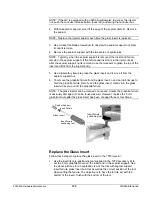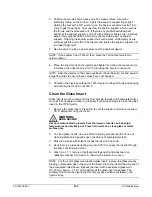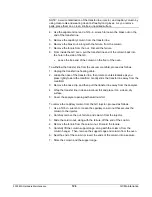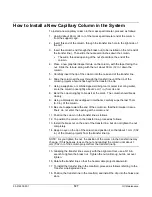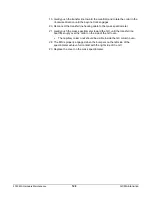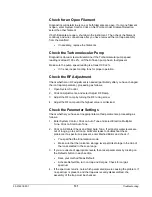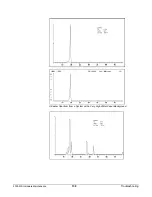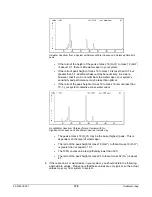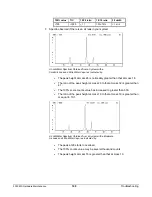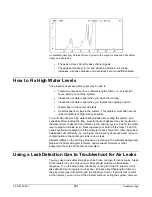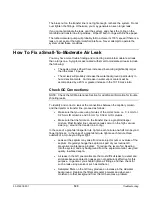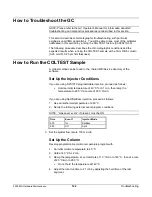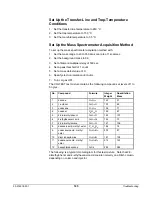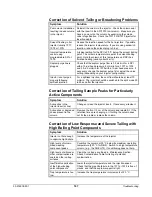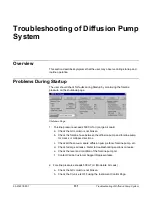
2000 MS Hardware Maintenance
136
Troubleshooting
What To Do If the Trap Function Calibration Fails After the
Calibration Ions Have Been Correctly Identified
If the trap function calibration fails after the calibration ions have been correctly
identified, you should investigate the following possible causes:
•
The electron multiplier voltage is too low.
•
The cal gas pressure is too low.
Check the Electron Multiplier Voltage
Enter System Control. Select AutoTune and click on Electron Multiplier Test.
Click on Start AutoTune.
Check the Cal Gas Pressure
Enter System Control. Select Manual and click on Adjustments. Click on Adjust
Cal Gas. Set the cal gas pressure to a value at the mid to high end of the scale.
How to Check for Leaks
A major problem in mass spectrometry is keeping the system as leak-tight as
possible. Air leaks may result in reduced sensitivity, tuning problems, and
decreased resolution; in addition, they may reduce the lifetimes of the capillary
column, filaments, and the electron multiplier. Check the system each day for air
and water leaks before you begin running acquisitions.
As you use this guide, pay particular attention to any examples in which air and
water backgrounds appear in the spectra. Familiarity with these examples will
help you to rapidly troubleshoot the system.
How to Establish the Conditions Required to Check
for Leaks
To establish the conditions required to check for leaks, proceed as follows:
1. Verify that the carrier gas pressure on the gauge in the front panel of the GC
is set correctly.
•
With a 30m x 0.25 mm, DB-5 fused silica capillary column, the carrier
gas pressure should be about 10-12 psi (83 kPa).
2. Set the trap temperatures:
•
Trap heater temperature to 150
°
C.
•
Transfer line temperature to 270 °C.
•
Manifold temperature to 35
°
C.
3. Set the column-oven and injector temperatures to 100
°
C.

